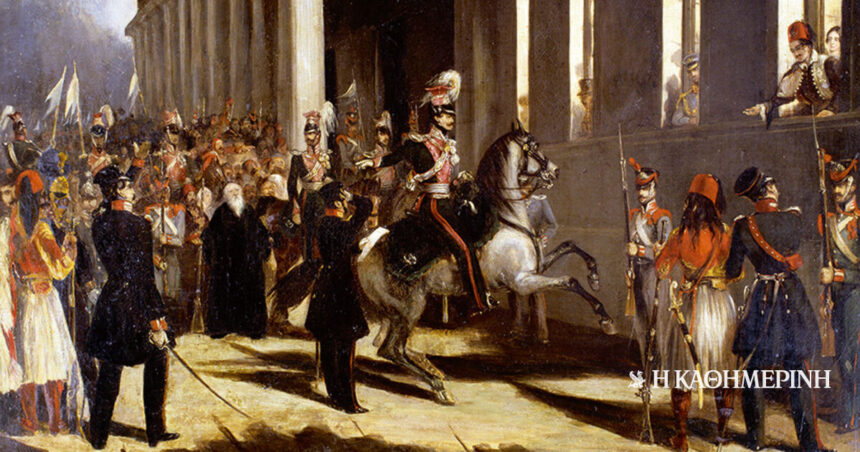A feature of the first decade of his reign Otto in Greece was the absence Constitutionwhich would guarantee the rights and freedoms of the Greeks and set boundaries to the power of the king. It is no coincidence that the first decade of Bavarian Otto’s stay on the throne has been described as a period of absolute monarchy in the political history of the place. Otto’s rule of power was not a legal text, which was written after constant discussions and reciprocal concessions of Greeks’ representatives, but one international treatythe one signed in London on April 25/May 7, 1832.
Anarchy that prevailed in Greece after assassination of John Kapodistrias And the civil war that erupted between supporters of his work and his political opponents facilitated the imposition of the monarchical solution. It was dominated by the view that the prudent governance of a monarch, in this case Otto, though absolutely, would end the internal conflicts and mark the country’s reconstruction. But the fact that the fate of the Greeks was decided in vain by the protective forces shows the size of the guardianship who were determined to exercise in the newly formed Greek state.
Greeks’ expectations of Otto’s rule were denied within a few years. In early 1843, Greece was confronted with a financial crisiswhich forced the political leadership to take extraordinary measures by reducing state spending. The government’s financial measures have contributed to the increase in the number of unhappy, not only with the economic policy of King Otto, but also with the inability to participate in the administration. The request for a concession began to be transmitted from mouth to mouth. He was considered the only way out of the administrative chaos.
After intense discussions and doubts, the king accepted the terms set by the revolutionaries.
The revolution broke out on September 3, when the Athens Guard stood under the Commander of the Equestrian Unit, Dimitrios Kallergis. Her main demand was the concession of a Constitution by Otto. After intense discussions and doubts, the king accepted the terms set by the revolutionaries. On September 7, Elections were announced for the last week of October for the emergence of a National Assembly. The first meeting of the new Parliament met on November 8th in the newly built university building. A few weeks later, on November 26, the National Assembly elected a committee consisting of twenty -one members led by Leo Mela, whose responsibility was to draw up the Constitution’s plan.
After one month’s hard work, the Commission submitted its plan to Parliament on December 28th. The discussion on the articles of the Constitution began a few days later, on January 3, 1844, and lasted until 21 February. The House then submitted the draft of the Constitution to Otto so that he could study it with his advisers and to point out any corrections that had to be made. When this process was completed, Otto ratified and issued the new Constitution on March 18, 1844. He then came to the House and gave the oath designated Article 36 of the Constitution. The next day he rose a new era in the political history of the country.
Column: Myrto Katsigera, Vassilis Minakakis, Antigoni-Despina Poumenidou, Athanasios Syroplakis








